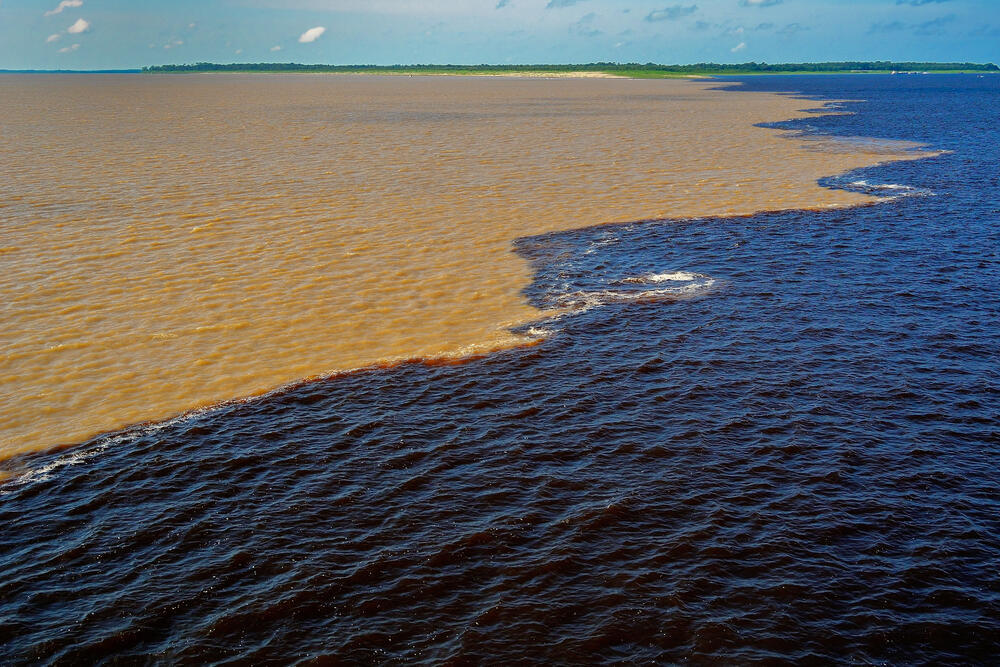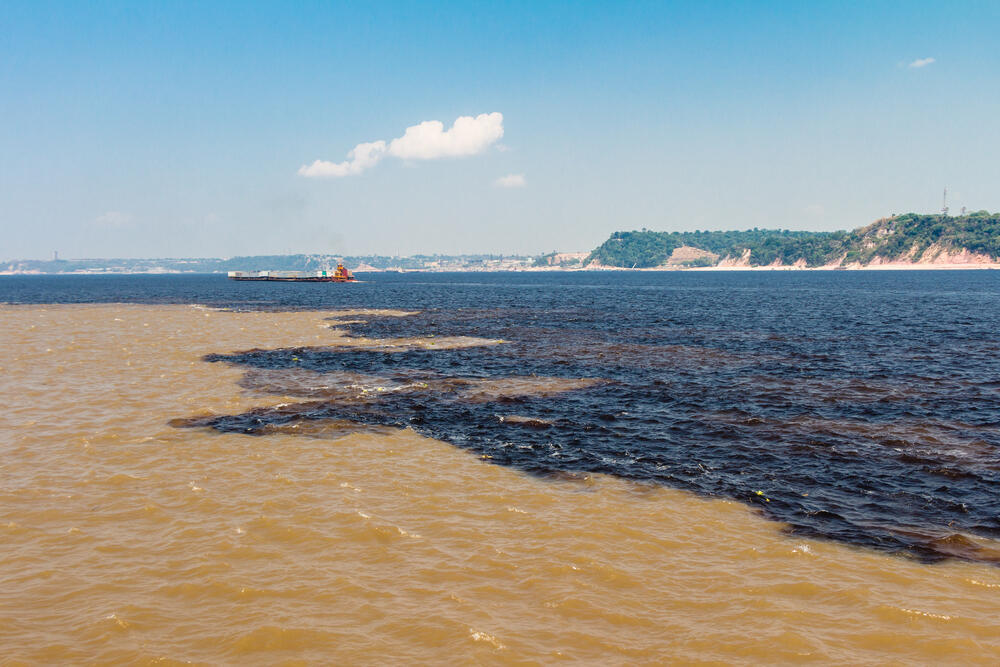Getting your Trinity Audio player ready...
When the waters of the Rio Negro and the Amazon River in Brazil converge, a fascinating and visually striking phenomenon occurs where the distinctly colored waters appear to remain separate. This unique occurrence involves the Black River, one of the world's longest rivers, meeting the vast and well-known Amazon River. The Rio Negro's waters are notably black, while the Amazon's are a sandy brown. When these two rivers meet, their contrasting colors create a remarkable natural spectacle.
Prof. Avital Geva, a recipient of the Israel Prize and a biologist at the George S. Wise Faculty of Life Sciences at Tel Aviv University, explains that the phenomenon of different types of water not mixing is well-documented and usually related to differences in density.
"The density differences can arise from variations in salinity or temperature. Saltier water is heavier and will sink below less salty water (a phenomenon known as chemical stratification), or warmer water, being less dense, will float on top of colder water (thermal stratification)," Prof. Geva clarifies.
Thermal stratification, for instance, can be observed in the Sea of Galilee, where the surface water is warm in the summer months while the colder water remains at the bottom. These two water layers do not mix until the surface water cools in the fall, reducing the density difference and allowing for mixing. "In the case of the Rio Negro and the Amazon, the lack of mixing is influenced by a density difference stemming from temperature variations."
"The Rio Negro's waters are clear but very dark, akin to black tea, while the Amazon's waters are murky and light. The phenomenon is particularly prominent here because of the stark color contrast between the two rivers. The Rio Negro, flowing through jungles, derives its color from the leaching of materials from leaf litter, similar to a dark tea extract. In contrast, the Amazon's lighter color is likely due to soil erosion," adds Prof. Geva.
A similar phenomenon can be observed when sailing between Vietnam and Cambodia at the confluence of the Mekong River, one of Asia's largest rivers, and the Tonle Sap Lake, Cambodia's largest body of water. Here, as with the Rio Negro and Amazon, one can see temperature and color differences between the two water sources. In the South American case, this phenomenon extends for about 3.7 miles before the waters finally mix.



